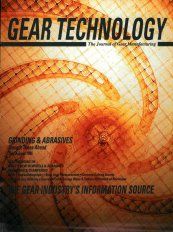In the quest for ever more exacting and compact commercial gears, precision abrasives are playing a key production role - a role that can shorten cycle time, reduce machining costs and meet growing market demand for such requirements as light weights, high loads, high speed and quiet operation. Used in conjunction with high-quality grinding machines, abrasives can deliver a level of accuracy unmatched by other manufacturing techniques, cost-effectively meeting AGMA gear quality levels in the 12 to 15 range. Thanks to advances in grinding and abrasive technology, machining has become one of the most viable means to grind fast, strong and quiet gears.
